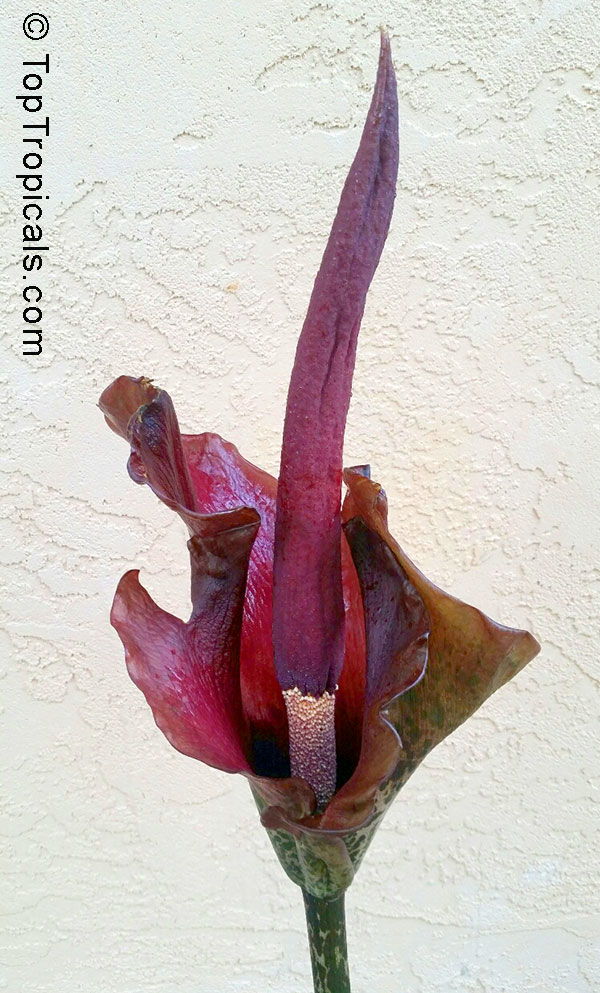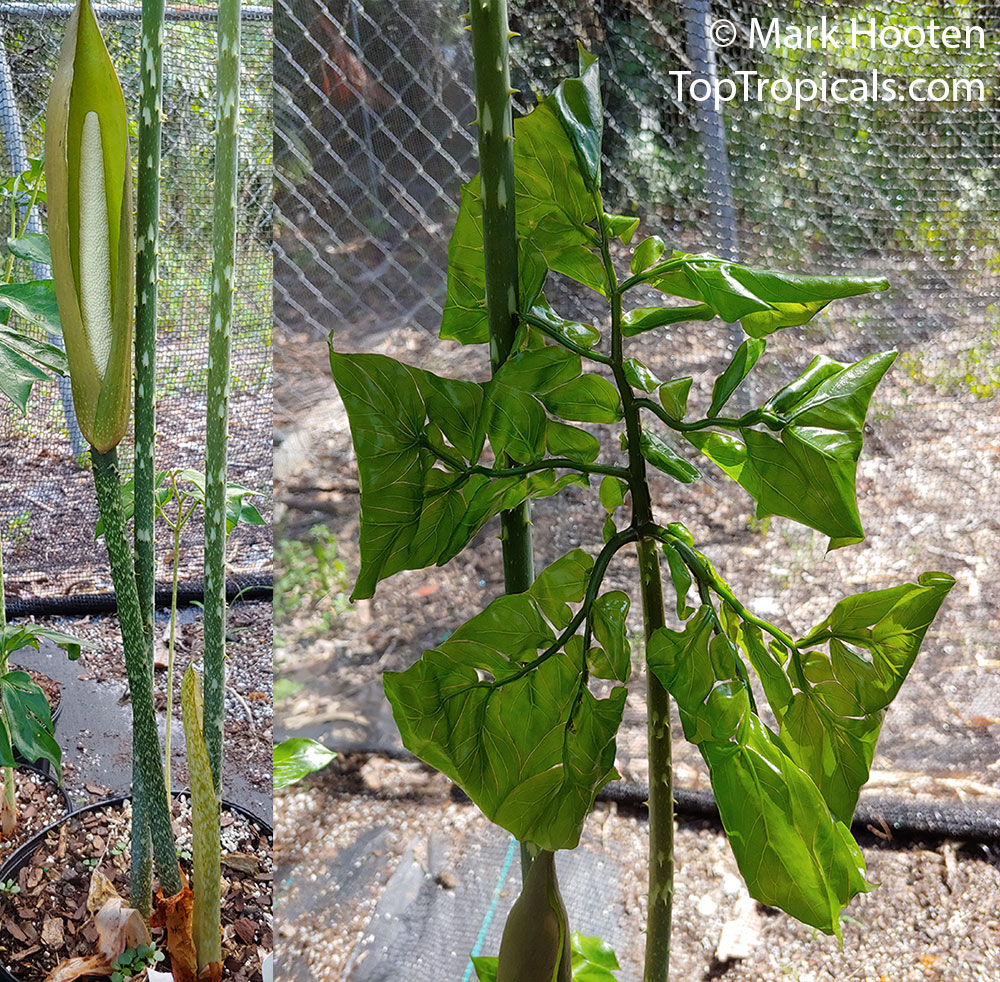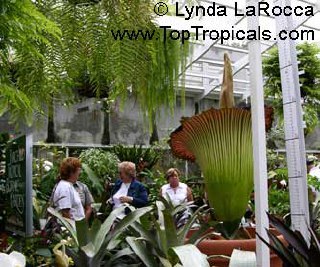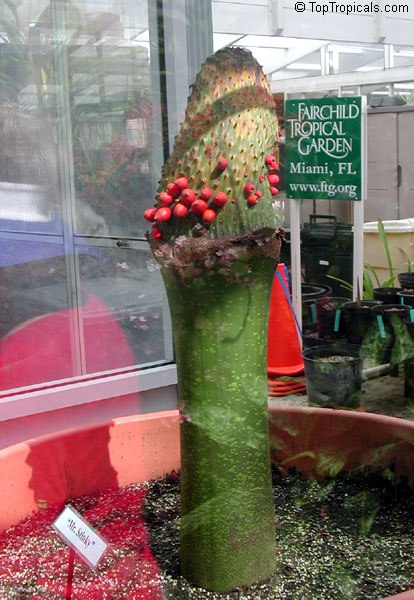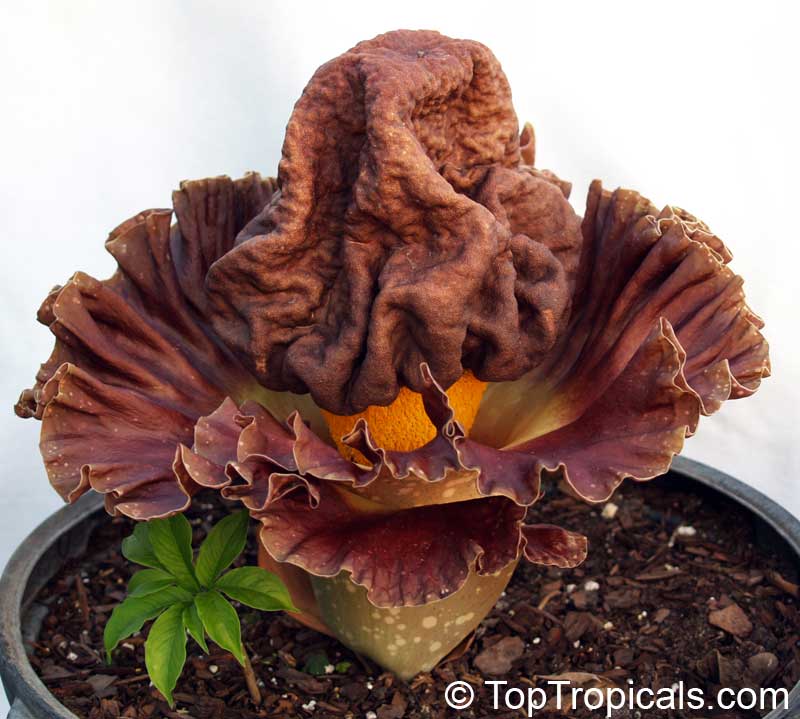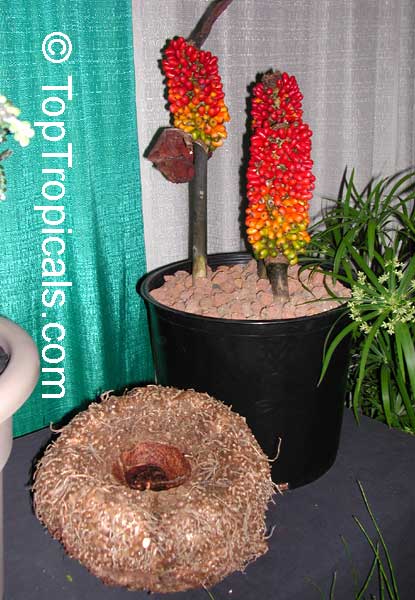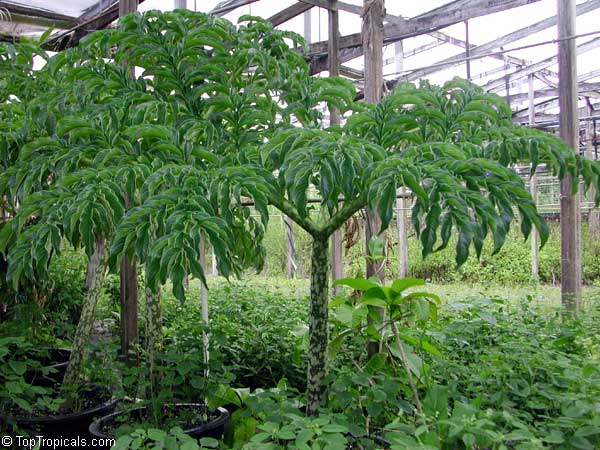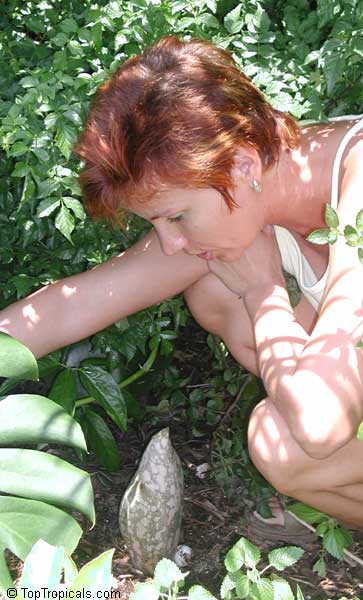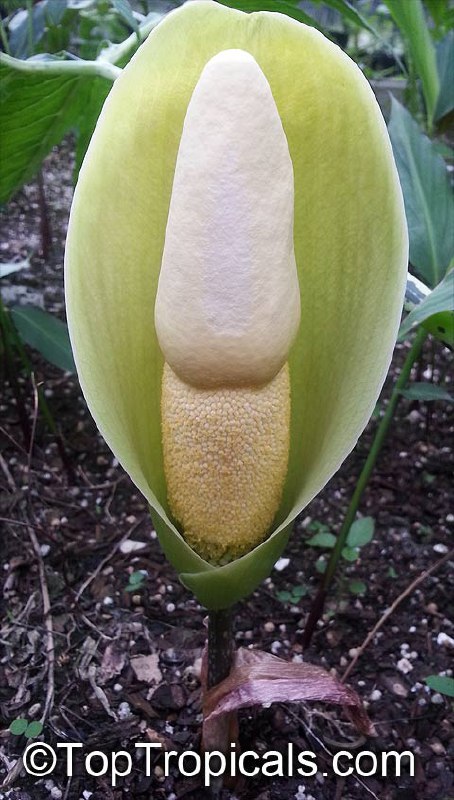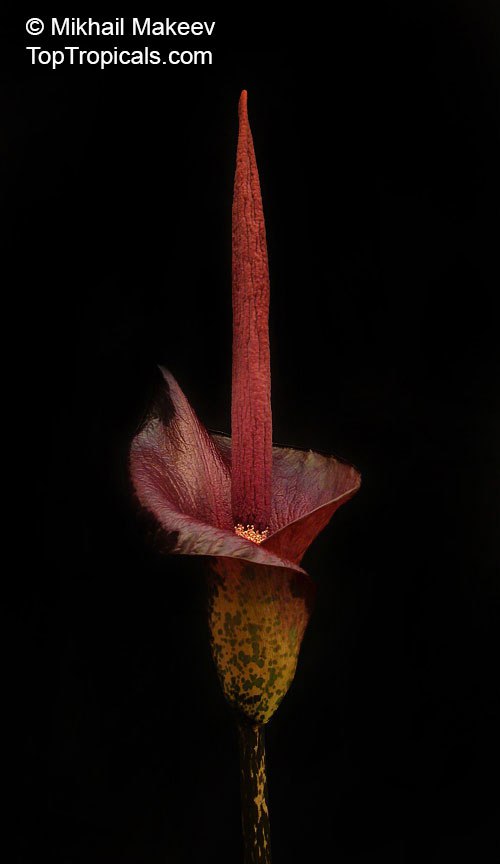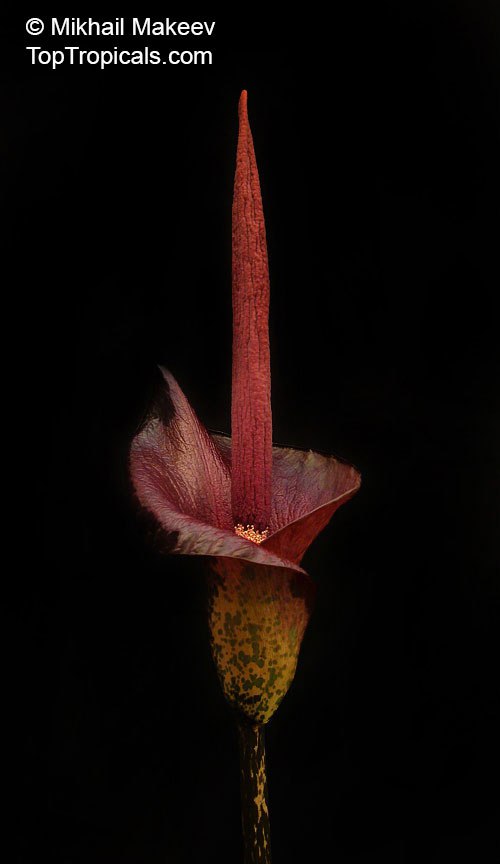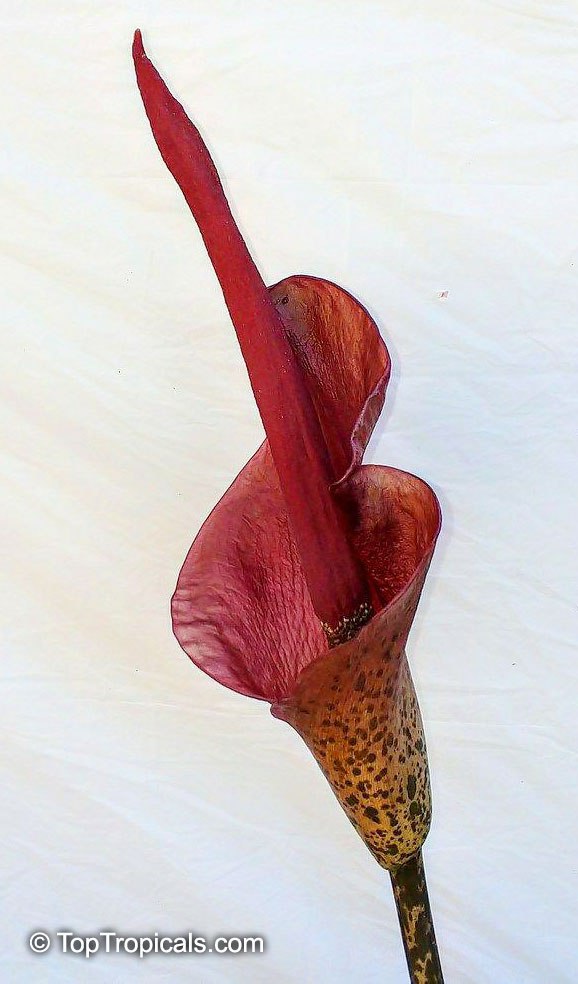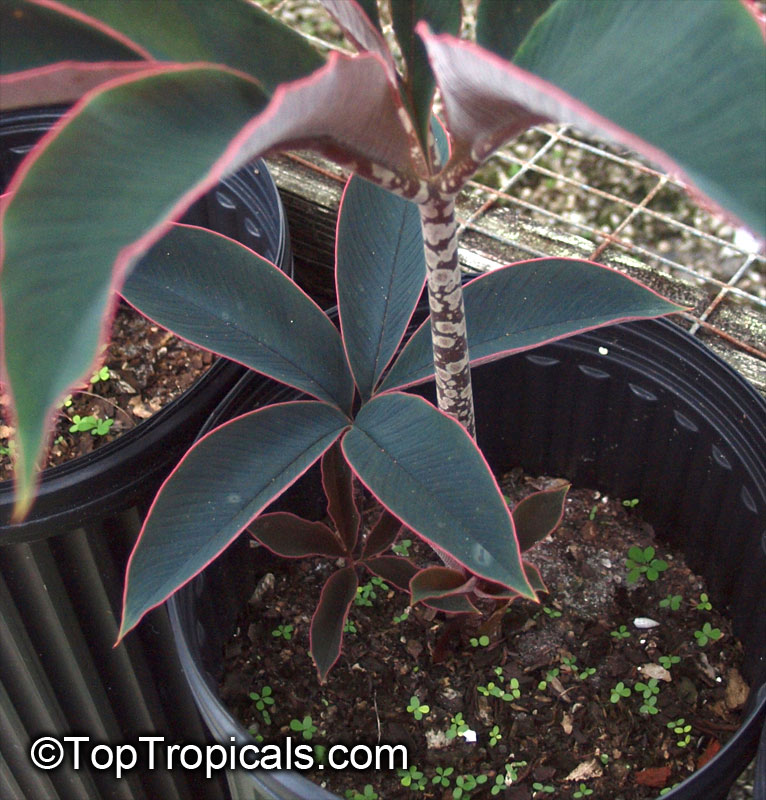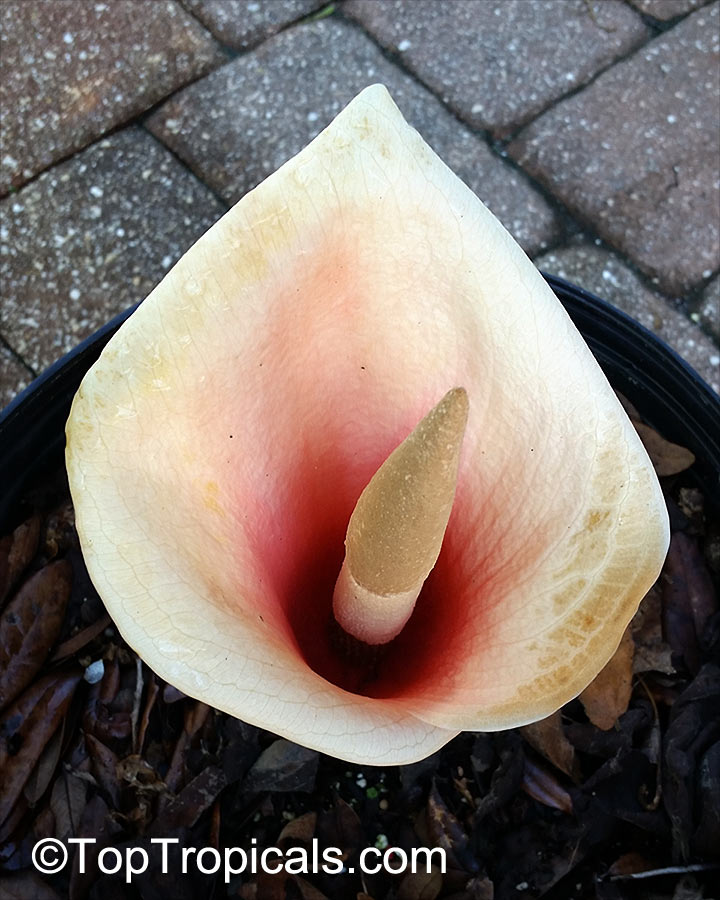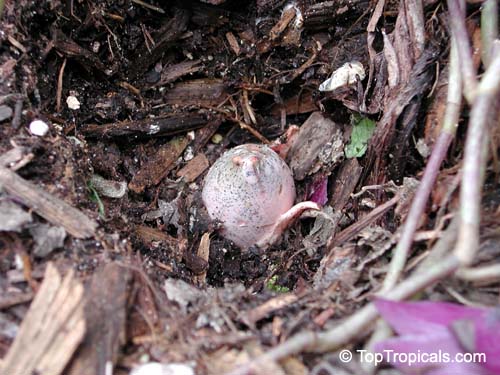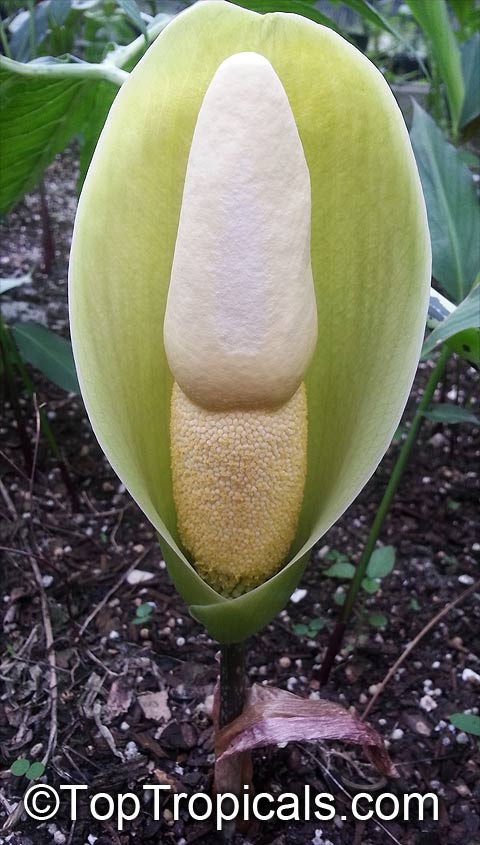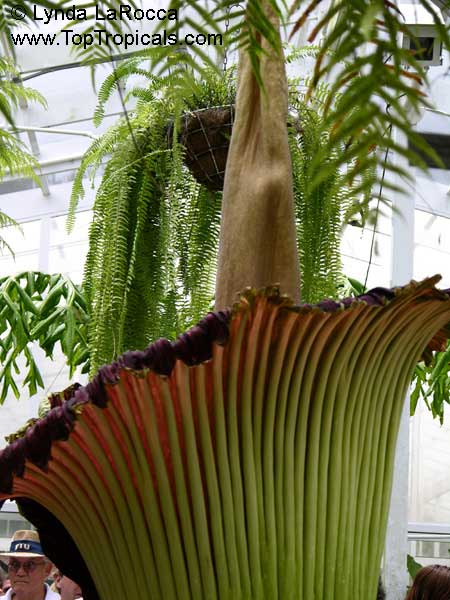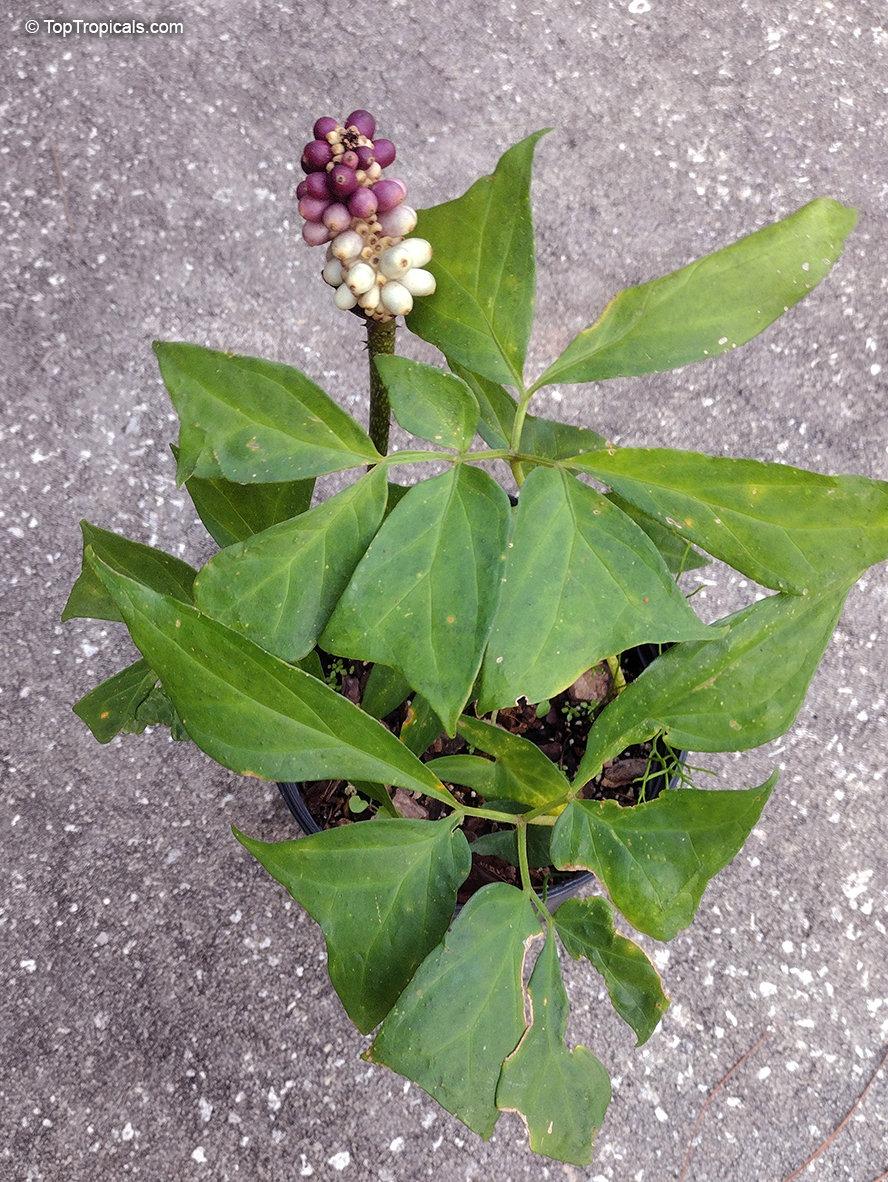Detailed plant profiles: 11 plants found
Amorphophallus atroviridis
Family:Araceae
Voodoo Lily








This plant prefers regular to moderate water during its growth season but should be kept slightly dry during the winter months in colder regions. When it comes to plant care, it is best to grow this plant in a pot of average quality potting soil and water regularly. If you plan on cultivating this exotic plant in a cold region, it is best to bring the pot indoors during the cold season and keep it in a cool and well-ventilated place.
Amorphophallus atroviridis can be grown in USDA zones 9-11, and can be propagated by division or seed. To propagate by seed, it's best to sow the seeds in humus rich or seed starting mix and keep in warm and moist conditions for best results.
Overall, Amorphophallus atroviridis is a beautiful and unique plant that can bring a unique charm to any garden, balcony, or even a home. With beautiful pink or white/ off-white flowers and ornamental foliage, this easy to care for plant is sure to make a statement.
See detailed plant profile in new window:
https://toptropicals.com/catalog/uid/amorphophallus_atroviridis.htm
Amorphophallus bulbifer
Family:Araceae
Voodoo Lily






See detailed plant profile in new window:
https://toptropicals.com/catalog/uid/amorphophallus_bulbifer.htm
Amorphophallus konjac
Family:Araceae
Voodoo Lily









 Amorphophallus konjac
Amorphophallus konjac (Voodoo Lily) is a small plant growing 2 to 5 ft tall. Its flower has unusual color is white and purple. The flower is pollinated by flies that find its odor of rotting meat attractive.
It grows a single, elongated stem called a corm and a single large leaf that wraps around it. The corm is the part of the plant that is used, as well as its tuber, which is commonly called the Konnyaku potato. It is one of the most exotic, bizarre flowers. The single leaf dormant in winter, then in spring the plant shoots out a fantastic flower. The tubers of the plant, Konnyaku potatoes, are edible when cooked like a potato and are often dried and ground into a flour used in noodles and tofu. It is also used in traditional ethnomedical practices. It can be grown in USDA Zone 8-11.
See detailed plant profile in new window: https://toptropicals.com/catalog/uid/amorphophallus_konjac.htm
Amorphophallus sp.
Family:Araceae
Voodoo lily, Devils tongue, Snake Palm, Corpse flower, Elephant Foot Yam










See detailed plant profile in new window:
https://toptropicals.com/catalog/uid/amorphophallus_sp.htm
Amorphophallus symonianus
Family:Araceae
Voodoo Lily






 Amorphophallus symonianus
Amorphophallus symonianus, also known as the Voodoo Lily, is a small shrub native to Thailand. Its petioles can reach a height of 2 to 5 feet, with an olive-green speckled color. On top of the petioles is a green leaf at the bottom and a white off-white perianth at the top. Although the color may appear to be plain, the way in which the flower is arranged makes it quite an unusual sight.
When it comes to growing and caring for a Voodoo Lily, it can be done relatively easily with the right conditions and maintenance. It should be grown in USDA Zones 9-11, in an area with partial shade or semi-shade, and away from direct sunlight. Regular watering is also needed, though not too often as to cause root rot. The soil should be kept moist with moderate water, so as to provide ideal growth conditions.
For those living in colder regions and wanting to potentially cultivate their own Voodoo Lily, you can do this with ease in a pot. As long as it is placed in a warm and moderately light environment, then the plant should develop and thrive. Be sure to avoid direct sunlight and keep the plant in some shade instead. Additionally, it is important to water the plant regularly and provide it with a well-draining soil and enough nutrients to keep it healthy.
Overall, the Amorphophallus symonianus makes an interesting addition to any garden or potted setting and brightens up any space with its unique arrangement and beautiful off-white flowers. Although it requires the right level of care and maintenance, the Voodoo Lily can add life to any environment, be it fully outdoor or an indoor potted plant.
See detailed plant profile in new window: https://toptropicals.com/catalog/uid/amorphophallus_symonianus.htm
Amorphophallus titanum
Family:Araceae
Titan Arum







This flowering plant is best grown in USDA Zones 9-11, although it can be grown in other zones with the right care. The best location for this plant is in the shade or in semi-shade, away from direct sunlight. Titan Arum plants should have regular access to water, although they don't tolerate a lot and too much water can lead to root rot. Moderate watering is the best way to ensure healthy growth and development.
When grown in a pot in colder climates, it is important to ensure the soil is well-draining. Winter dormancy is usually not necessary for these plants, but if temperatures do drop, the plant should be protected from any frost. It is also important to note that these plants need to be kept away from direct sunlight during summer, otherwise it may lead to burn.
Titan Arum makes for an excellent addition for your garden due to its exotic and unique looks. With the right care and maintenance, this plant can thrive and can provide a great statement piece.
See detailed plant profile in new window:
https://toptropicals.com/catalog/uid/amorphophallus_titanum.htm
Anchomanes difformis, Amorphophallus difformis
Family:Araceae
Anchomanes






Originated from the jungles of Benin, along the west coast of Africa. The indigenous people there use the species for a variety of medicinal properties.
These unusual plants grow from a thick, slowly growing tuber, often branching, which creeps horizontally just below the soil surface. The compound leaves are up to 30 inches tall and are supported on slender spotted stems with very rose-like thorns. The fascinating leaves are an enlogated bi-lobed bat shape, often with fenestrations (window holes).
Dormant all winter when they should be kept cooler but not cold, and the soil only occasionally lightly watered until spring. Upon warming weather, they should receive abundant water and bright light, but with no strong sunlight, as this is a jungle species. Often, but not every year, they begin growth with a tall, slender flower spike which may or may not self-pollinate and eventually produce a cluster of white berries which eventually turn voilet-purple when ripe and ready for planting. Germination takes several months, usually in spring of the following year. In Florida, they need only to be planted in the ground, and can then pretty much take care of themselves, although they grow equally well in pots. When in active growth, they want abundant water.
See detailed plant profile in new window:
https://toptropicals.com/catalog/uid/anchomanes_difformis.htm
Detailed plant profiles: 11 plants found 